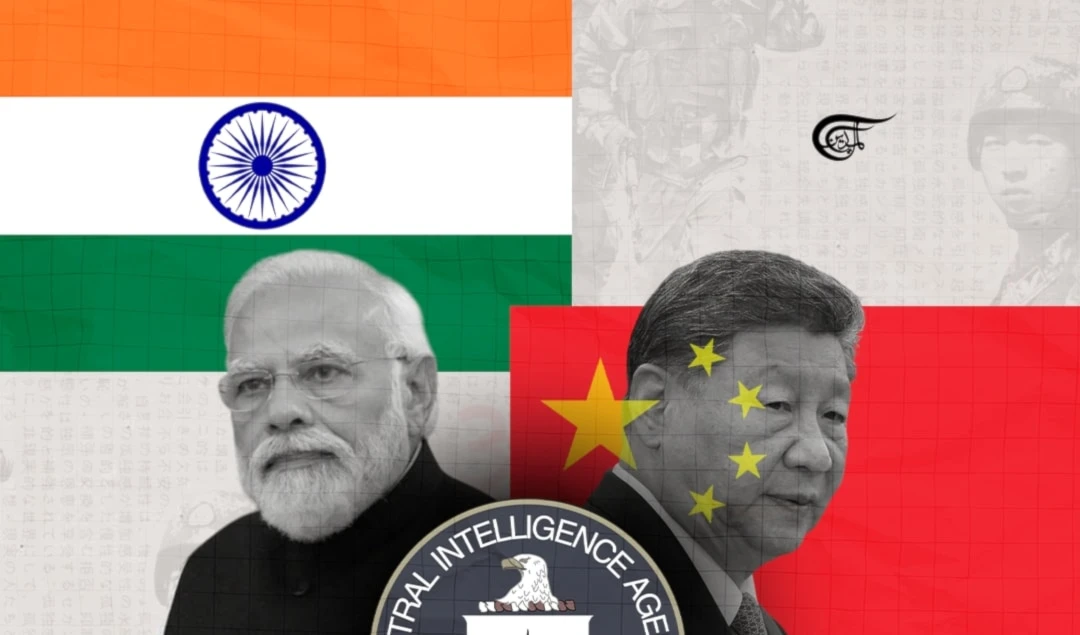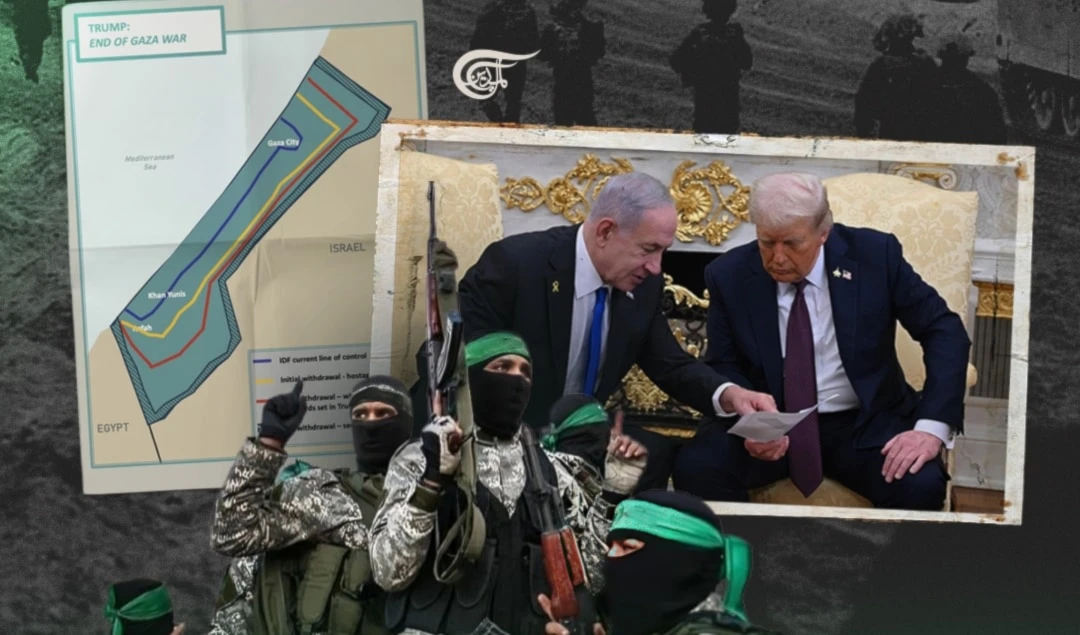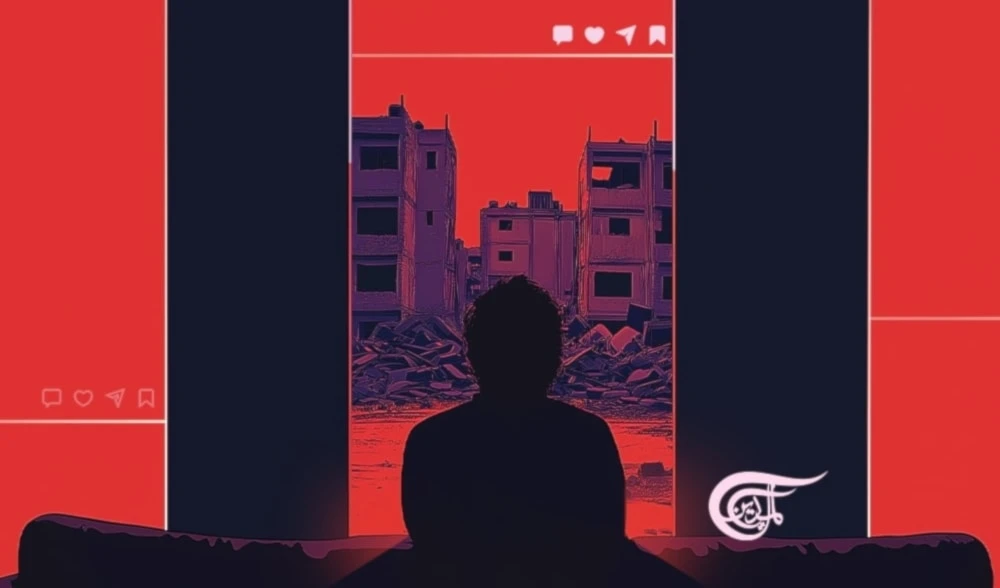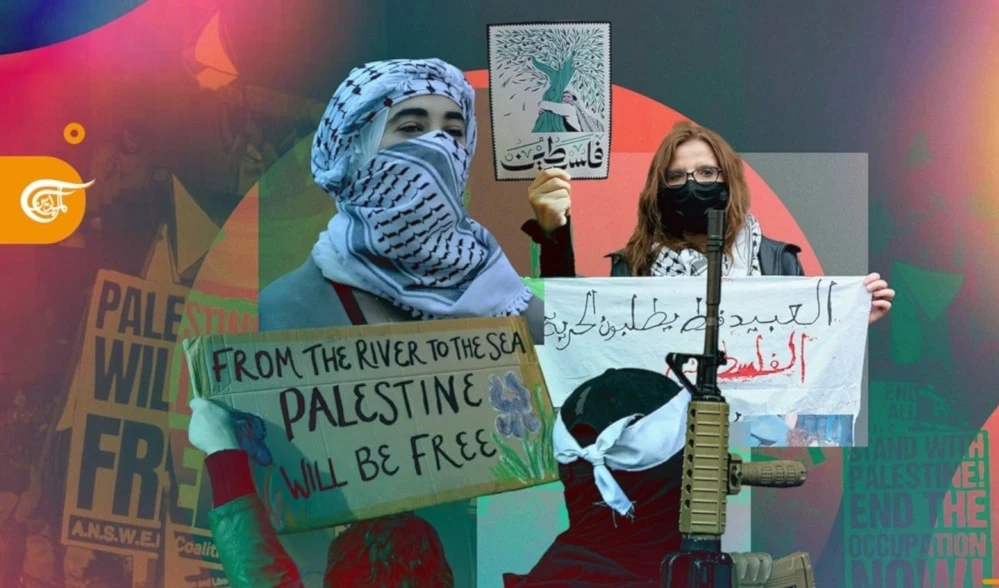7 months In… Is the TikTok Intifada still raging?
TikTok is more of a discomfort to Washington than any other Chinese company and proves that the tech sector is one that is no longer dominated by the US.
-

Since images do not lie, and the spontaneity of the unfolding scene rings truer than any expression thereof, TikTok soon became a platform to support and show solidarity with Palestine from all around the world.
The case of Occupied Al-Quds’ Sheikh Jarrah generated compelling visual content, especially since its developments were interacted with on a daily basis both inside Palestine and out. The neighborhood, which lies in occupied East al-Quds, was subject to an Israeli security operation over the past months, which aimed to eject its residents.
Sheikh Jarrah is the historic neighborhood that has witnessed many Israeli aggressions and continuous take over attempts through “legal” excuses that aimed to create a new Nakba, by displacing its Palestinian residents and handing their homes over to settlers.
The harassment that Palestinians were subjected to by the Israeli occupation spilled over from real life to the virtual realm as well, with Israeli Occupation Forces (IOF) launching systematic campaigns against Palestinian content on a number of different applications, using its relations with their operating companies. This is why an application was needed whose margins can be used to confront the Israeli narrative.
May 2021’s TikTok Intifada
After censorship was imposed on social media platforms owned by the US oligarchy, Palestine’s youth resorted to TikTok to document “Israel’s” racism and constant aggression and share it online. These youth recorded occupation soldiers attacking children and civilians and bragging about it in front of the cameras. They broadcast live footage of Israeli settlers attempting to storm the neighborhoods of Sheikh Jarrah and Silwan to steal Palestinian lands, under the protection of the IOF.
Since images do not lie, and the spontaneity of the unfolding scene rings truer than any expression thereof, TikTok soon became a platform to support and show solidarity with Palestine from all around the world. Palestinian youth and teenagers succeeded in using new media to deliver the strongest of messages, and once again showed that steadfastness and determination in a cause pave the way for new levels, even at the technical level. What’s unusual here is that the youth of this generation, for the past decade, have dealt with the vilest campaigns that demonized them and called them traitors in order to dissociate them from an environment of resistance.
The campaign became increasingly popular, especially during the battle of Seif al-Quds and the aggression and systematic destruction suffered by Gaza. This experiment can be considered a practical success of the abilities of smart applications to create change through content.
In this field, the options became more diverse, either through blending resistance operations and rocket launches with spirited anthems or showcasing Israeli massacres against Palestinians in a way befitting the application’s technical options, in order to deliver the proper idea.
Thus, the TikTok Intifada came into being in order to show the suffering of the Palestinian people, attracting attention, while also becoming a tool to confront the Israeli narrative and the shackles binding the people of Palestine.
TikTok’s features
Tiktok is a video-sharing app that allows users to create their own 15-second video content on any subject and share it. The app today is more like a club, where Generation Z can dance in their own living rooms, dance, joke around, and share these moments with other teenagers who always have their mobile devices on hand.
This largely unique platform was successful because it didn’t copy other platforms, but instead offered something original that was to the liking of the digital generation. ByteDance, TikTok’s parent company acquired China’s lip-syncing app Musical.ly (which had a strong user base in the US) for $1 billion. It later merged both the application and its user base with TikTok, which is why we can find video content of children dancing to music and teenagers playing with their pets.
Why is the US so agitated?
While many journalists and social media pundits see the content on TikTok as silly and shallow, The Washington Post announced back in September that they will branch out into TikTok. Many saw this as a smart move, and it was not surprising that a new giant would embrace this platform, invest in digital media, guide it in the right direction, keep up with the demand, and create channels [to communicate] with future generations. Between the lines, however, there are many strategic goals that can be uncovered:
· 2021 was not only the year of the TikTok intifada but was also the year Gen Z discovered its power on the internet. Though simple and short, TikTok videos can tell stories. More importantly, interactions with its content can lead to an increase of international attention and pressure on the government and the international community. TikTok also offered an “escape plan” from the narrative imposed by the West on digital platforms. During the last Intifada, the West imposed censorship on Palestinian documentation of Israeli aggression and hegemony, so as not to benefit others in Bolivia, Venezuela, Lebanon, Syria, and India.
· TikTok is an unprecedented penetration of the depths of US society and is there to stay even among Americans. Therefore, the easiest thing to do is to embrace it. US teenagers prefer TikTok to Instagram (which is the most popular among teenagers, according to their claims).
· More Americans with ages ranging from 12-17 are using TikTok than Instagram on a weekly basis, according to a poll published by Forrester. In reality, the application is more of a nuisance to Washington than any other Chinese company, even Huawei. Huawei-manufactured equipment can be easily manufactured by other companies in friendly states, like Sweden’s Ericsson, and the equipment can be easily removed and replaced, like in the case of the UK.
· The platform’s popularity runs counter to the US narrative, which described the Chinese President’s agenda as being repressive for Chinese companies operating on an international level, especially since TikTok, for example, is widely used almost everywhere, despite it first gaining popularity in Asian markets, like Japan and the Philippines. It gained traction only later in the US and Europe. Moreover, TikTok reflects the substantial rise of China and is a reminder that the tech scene is no longer limited to US Western hegemony on the sector.
· As the battle between the US and China picks up pace, the power of retaining individuals’ social data also grows more sensitive. A quick reading on TikTok in US headlines allows one to notice widespread accusations of China stealing secrets, monitoring their populace, and aiding Beijing’s “obscene” goals.
Articles on data security are also being published on a large scale, discussing consequences and assumptions that Chinese authorities are collecting data on US citizens for unknown reasons, with this possibly being a target or even a way to prepare for a Chinese advertising tool.
However, this method isn’t only restricted to TikTok. According to Washington, the app’s national security threats are very real. In the last few weeks, the position against the company has grown even stricter. Congress and the White House are leaning toward banning Chinese companies from reaching the US stock market. Even the once-loved Jack Ma was banned in 2018 when CFIUS wouldn’t allow his financial tech firm Ant Financial to purchase the Dallas-based payment service MoneyGram.
On the social level, particularly in terms of creating influence and stars, and because US platforms can control what content is popular, and greatly control the world of content creation, they can allow or block whomever they want from publishing, whenever they wish to do so. The effects can be seen in social media users and the youth, in favor of the companies’ owners, though in a soft, long-term manner. The younger generations, however, would become harmonized with the content being allowed and exported in accordance with the Western agenda and with these companies’ policies, which brand content deemed compromising to the West with labels like terrorism, barbarism, etc…
How can TikTok offer an alternative?
Firstly, we need to realize that the information being spread about TikTok is Western propaganda, because they arise from political, and not technical goals since Chinese products are being confronted by the United States since they pose a real threat to the US hegemony on technology.
As for where it can be put to use, the margins TikTok allows make this possible, especially since these margins are not available in other applications, and for political considerations as well. So, what is needed is to transform TikTok into a beneficial platform on the cultural, political, and social levels, namely in confronting the Western imperialist attack on our countries. This begs the question: What is it that should be accomplished?
Here, we can consider a number of goals:
· Enforce our digital narrative and strengthen it with numbers, evidence, and images: all righteous causes, like the Palestinian cause, are in need of meaningful digital content that must be published, and its details followed up on at the appropriate time.
· Investing in youth: As they are more acquainted with the platform and more spontaneous when using them, they have a higher degree of influence. If this influence was to be mixed with education, training, and employing the scientific method in our approach to causes, then it would be especially more beneficial to the youth demographic.
· Going to back to the baseline: One of the lessons we can extract from the battle of Seif al-Quds and its accompanying virtual scene is that unity is the key. Disagreements naturally exist, and are legitimate – to each his own – but focusing on the common ground, respecting differences, and discussing how to achieve harmony remain the key to supporting al-Quds in an effective manner, that would also be projected in social media, especially on TikTok.
In conclusion
Social media platforms are no longer disconnected from political intervention, or from being employed in political aims and propaganda. Therefore, what’s needed is to use all available resources to spread political ideas that support righteous causes in our Arab world, especially the cause of Palestine.
Being fearful of any platform and not taking advantage of it will only leave a vacuum that will undoubtedly be filled by others. In the case of TikTok, this app has proven that it can make a difference and create change in the prevailing mainstream mentality that runs counter to Palestinian content. Since war is largely a war of narratives, it is necessary and imperative that the narrative that opposes Western occupation and hegemony also be present on TikTok, and that we not give in to the demonization of this platform by Western propaganda. This very propaganda will have us leave the space empty, to be filled by the wrong content.

 Bahia Halawi
Bahia Halawi
 10 Min Read
10 Min Read










